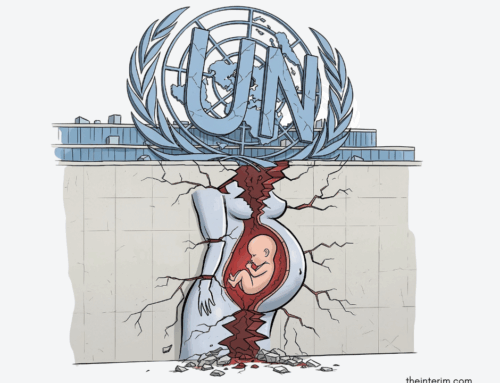 “All who would win joy, must share it;
“All who would win joy, must share it;
happiness was born a twin.”
— George Gordon Lord Byron
Birth, as it is often said, is a miracle. A baby is born, a living, breathing, honest-to-goodness baby that you can hold in your arms. Just prior to delivery, it was something parents were expecting, but whose reality was still concealed. It was something that was swelling under its mother’s heart. But it was not something that anyone would call “cute” or “adorable.” It was something that was growing larger and heavier all the time and causing mommy a great deal of discomfort and anxiety. The sudden transition from an unidentifiable shape to a baby does seem miraculous. But that is our perception, not that of nature.
The real miracle is the development. Two fragments known as sex cells, whose independent lives are in peril, come together and begin sorting out the step-by-step process of organizing the sequence in which trillions of cells will form a splendidly integrated human being. Scientists tell us that the one-cell zygote, the starting point in this extraordinary development, contains enough information to fill 1,000 volumes of the Encyclopedia Britannica. What unseen principle guides this development so that the eye lashes, toe nails, lips, kidneys, lungs, etc., all arrive at the right time, appear in the right place, and operate in the right way? The baby emerges not as a Picasso portrait, but as a perfectly unified, properly functioning, unique human being.
Let me turn the spotlight to Dr. William A. Rowane, D. O., an obstetrician who has been delivering babies for nearly 50 years. One of the most thrilling experiences of his life, according to his own admission, was his first obstetrical delivery when he was a senior medical student. It was a home delivery in an old dilapidated tenement section along the muddy banks of the Missouri River in Kansas City. Consider carefully his words: “As I waited patiently for this extraordinary miracle to transpire I began to realize that this conception brought together two human cells each on the edge of death, but by their union all the strands and webs of two lives were folded into one complex human being with a physical body and an immortal soul. This is the supreme example of the perfect order in the universe and the presence of the Divine Architect and I was permitted to play a humble role.”
Miracles, however, do not always transpire without a price tag that requires payment in the form of worry, sweat, and sleepless nights. Making room for God’s artistry can be quite distressful. But what about twins? And the likelihood of delivery by Caesarean Section? This is the double worry my son and his wife were facing. The miracle of development would be accompanied by another kind of development that increased anxiety on a daily basis. The need for prayer was not only evident, but urgent.
St. Raymond Nonnatus is the patron saint of women who are undergoing difficult pregnancies. His appended name, Nonnatus, means, in Latin, “not born.” He was a Caesarean delivery in the early 13th century (around 1204 in Portella, Catalonia, Spain). He was elevated to the College of Cardinals in 1239 and his cult was approved in 1625. Today there are St. Raymond Birthing and Training Centers in Marikina City and Rizal, in the Philippines, as well as in other places. St. Gerard is also a patron saint of expectant mothers, though he came into the world through a normal birth. Prayers are salutary as well as calming. It is always good to call upon higher than human hands.
On Oct. 21, 2011 Paul Alexander Gerard came into the world at seven pounds and 15 ounces at 12:52 PM. Two minutes later (women are always just a little bit late) his sister Kiera Maria Faustina arrived weighing seven pounds and nine ounces – quite a ride for the parents – Frances and my son, Paul. But everything went as well as could be expected.
Four days after the delivery, the foursome returned to their homestead, which was beginning to resemble a food emporium thanks to the parade of generous relatives and friends bearing so many tasty and easy-to-prepare dishes. Baby-sitters were in abundance.
Just as the twins were not alone in the womb, their parents were not alone in the web of their extended family. Twins have a remarkable way of touching hearts and bringing out the best in people. Abby Johnson points out, in her best-selling book, Unplanned: The Dramatic True Story of a Former Planned Parenthood Leader’s Eye-Opening Journey Across the Life Line, that it is not uncommon for a pregnant woman to cancel her abortion when she discovers that she is carrying twins. Twins are twins for life – twins in the womb, and still twins when they are 50.
There is something about twins – their appellation, their relationship with each other – that defies their being reduced to “fetuses.” Sir Arthur Conan Doyle, the creator of Sherlock Holmes, affirms this close relationship between twins when he writes, “my sister and I were twins, you will recollect, and you know how subtle are the links which bind two souls which are so closely allied.”
Paul and Kiera do not know it yet, but they present an existential argument against abortion. But as far as mommy and daddy are concerned, they promise to double the fun, double the joy, and double the trouble. Their twin saints, Raymond and Gerard, will continue to watch over them with love and even greater expectations.
Donald DeMarco is professor emeritus at St. Jerome’s University in Waterloo, Ont., and Adjunct professor at Holy Apostles College and Seminary in Cromwell, Conn.




